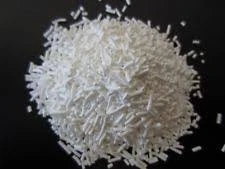
Exploring Common Additives and Preservatives in Food Production and Their Effects
Additives and Preservatives Used in Food Processing
In today's fast-paced world, food processing plays an essential role in preserving the quality and safety of our food supply. Among the many techniques employed by food manufacturers, the use of additives and preservatives has become a subject of significant attention. These substances, while often criticized, serve crucial roles in enhancing the shelf life, flavor, color, and texture of various food products.
Understanding Food Additives and Preservatives
Food additives are substances added to food to maintain or improve its safety, freshness, taste, texture, or appearance. They can be classified into several categories, including flavor enhancers, colorings, stabilizers, emulsifiers, and thickeners. On the other hand, preservatives are a specific type of additive that inhibits the growth of microorganisms, thereby preventing spoilage and extending the shelf life of food products.
The need for food additives and preservatives is primarily driven by the challenges of food storage and distribution. For instance, fresh produce spoils quickly due to microbial growth, while prepared foods can degrade in quality when exposed to air and moisture. In this context, additives and preservatives help manufacturers ensure that consumers receive products that are both nutritious and safe to eat.
Common Additives and Their Uses
Among the most commonly used additives are artificial colorings and flavorings, which enhance the visual appeal and taste of foods
. For example, tartrazine is a synthetic yellow dye often used in candies, soft drinks, and baked goods. While it can make products more attractive, some consumers may be concerned about its effects on health, particularly for individuals with sensitivities.Flavor enhancers, such as monosodium glutamate (MSG), are used to intensify the natural flavors of food. MSG is particularly popular in savory dishes, giving a umami flavor that many find appealing. However, it has also garnered controversy, with some people reporting adverse reactions. Despite this, regulatory agencies like the Food and Drug Administration (FDA) consider it safe for general consumption.
Other additives, such as emulsifiers like lecithin, help maintain a stable mixture of ingredients that would otherwise separate, such as oil and water. This is especially important in products like salad dressings and mayonnaise. Stabilizers and thickeners, such as guar gum and xanthan gum, contribute to the texture of food, ensuring that products have a desirable mouthfeel.
additives and preservatives used in food processing

The Role of Preservatives
Preservatives play a fundamental role in the food supply chain by extending the shelf life of products. Common preservatives include sodium benzoate, potassium sorbate, and sulfur dioxide, which are frequently found in pickles, fruit preserves, and dried fruits. These substances inhibit the growth of mold, yeast, and bacteria, thereby preventing spoilage.
While preservatives are essential for food safety and longevity, concerns about their health implications persist. Some studies have suggested potential links between certain preservatives and health issues, prompting consumers to seek out natural options. In response, many food manufacturers have begun reformulating products to reduce or eliminate artificial preservatives, often replacing them with natural alternatives like vinegar or citric acid.
Regulations and Consumer Awareness
Governments worldwide have established regulations governing the use of food additives and preservatives. In the United States, the FDA oversees the approval of additives, ensuring they meet safety standards before being permitted in food products. Similarly, the European Food Safety Authority (EFSA) evaluates the safety of additives used in the European Union.
In recent years, there has been a growing movement toward transparency in food labeling. Consumers are increasingly demanding to know what is in their food, leading to a rise in the popularity of organic and minimally processed products. Many brands now emphasize clean labels, highlighting the absence of artificial additives and preservatives.
Conclusion
In conclusion, additives and preservatives are integral to modern food processing, providing essential benefits such as improved safety, extended shelf life, and enhanced sensory attributes. While concerns about their safety are valid, regulatory bodies continue to monitor their use and ensure consumer protection. As the landscape of food production evolves, the challenge remains to strike a balance between preserving food quality and meeting the demands of health-conscious consumers. As awareness and understanding increase, so too does the potential for making informed choices about the foods we consume.
-
Aluminum Hydroxide: Quality Gels & Dried Gel AntacidNewsAug.31,2025
-
Buy High-Quality Trichloroisocyanuric Acid for Sale | TCCA 90% SupplierNewsAug.30,2025
-
Pure Sodium Dichloroisocyanurate Dihydrate | Powerful DisinfectantNewsAug.29,2025
-
Industrial Chemicals: Quality & Purity for Every IndustryNewsAug.28,2025
-
Nitrile Rubber Honoring Strict Production StandardsNewsAug.22,2025
-
Aspartame Ingredients Honoring Food Safety ValuesNewsAug.22,2025
-
Fertilizer for Balanced Plant NutritionNewsAug.22,2025
Hebei Tenger Chemical Technology Co., Ltd. focuses on the chemical industry and is committed to the export service of chemical raw materials.
-

view more DiethanolisopropanolamineIn the ever-growing field of chemical solutions, diethanolisopropanolamine (DEIPA) stands out as a versatile and important compound. Due to its unique chemical structure and properties, DEIPA is of interest to various industries including construction, personal care, and agriculture. -

view more TriisopropanolamineTriisopropanolamine (TIPA) alkanol amine substance, is a kind of alcohol amine compound with amino and alcohol hydroxyl, and because of its molecules contains both amino and hydroxyl. -

view more Tetramethyl Thiuram DisulfideTetramethyl thiuram disulfide, also known as TMTD, is a white to light-yellow powder with a distinct sulfur-like odor. It is soluble in organic solvents such as benzene, acetone, and ethyl acetate, making it highly versatile for use in different formulations. TMTD is known for its excellent vulcanization acceleration properties, which makes it a key ingredient in the production of rubber products. Additionally, it acts as an effective fungicide and bactericide, making it valuable in agricultural applications. Its high purity and stability ensure consistent performance, making it a preferred choice for manufacturers across various industries.





